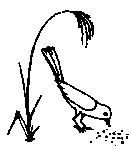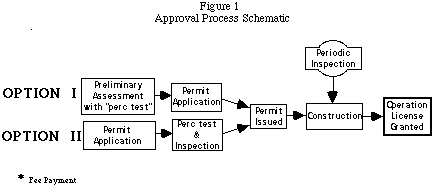
|

|

Strawbale Construction & Rainwater Cisterns
CONSIDERATIONS:
The use of greywater for irrigation requires separate blackwater and greywater waste lines in the house. This is not a difficult task in new construction but can be problematic in existing buildings.
In certain parts of Austin, difficult conditions such as steep slopes, poor soil percolation qualities, close proximity to lakes, or other problems may require the services of a licensed Professional Engineer. However, in areas without unusual conditions, a sub-surface greywater system can be approved.
Sub-surface distribution systems are required by the local Health Department for greywater. Sub-surface systems are not as effective as above-ground spray systems for turf areas but are highly conserving and effective for providing root zone irrigation of plant beds, shrubbery, and trees. The best applications for greywater will be in conjunction with low water demanding landscapes (Xeriscape).
Regulation of site wastewater disposal systems is provided by the Austin-Travis County Health Department and LCRA (where appropriate) under rules established by the State Legislature, the Texas Water Commission, and the City of Austin. The rules that govern greywater systems are currently based on modifications of septic system guidelines. Some variances are permitted for greywater since less volume is created than in a septic system. Low pressure dosing systems allow for uphill and smaller drainfields. Above-ground greywater spray systems are not permitted in Travis County.
| Commercial Status |
Implementation Issues |
||||||
|---|---|---|---|---|---|---|---|
| Greywater Irrigation System | |||||||
| Legend | |
|---|---|
| Satisfactory |
|
| Satisfactory in most conditions |
|
| Satisfactory in Limited Conditions |
|
| Unsatisfactory or Difficult |
|
Greywater systems have been used informally for a long time. Greywater systems are modifications of septic system technology and, thereby, use components standard to septic systems. The primary modification is the location of the drainfield in the root zone of plants making the greywater most useful as irrigation. An important feature of a greywater system is the isolation of blackwater to a separate system, leaving the greywater available for reuse - most often irrigation. Additional research by some companies is focusing on greywater treatment processes prior to its release for irrigation or other uses.
Septic system components are readily available. Consultation for greywater system engineering is similarly available in our area.
A sub-surface greywater irrigation system is similar to the cost of a downsized septic system for a home. Greywater irrigation systems cost more than conventional spray and drip irrigation systems to install due to the tank used in greywater systems (a filter and special emitters are also needed for greywater drip irrigation systems). When a sewer line is available, the added cost of a greywater system is significant.
Available.
Greywater systems are a popular alternative water system in Austin. Public presentations regarding greywater systems have been well attended over the past several years. Illegal greywater use has been noted to be occurring currently in Austin, primarily from clothes washers.
A greywater system must be approved by the Austin-Travis County Health Department. Current regulations deal with sub-surface greywater systems similarly to septic systems, with the following differences:
The lot size can be less.
Ordinance #880310-H & I establishes regulations of individual septic tank systems and septic tank system use in subdivisions. These regulations are found in Chapter 12-4 of the 1992 Code of the City of Austin and govern the construction, inspection, and approval of all septic systems, greywater systems, and composting toilets within the jurisdiction of the City of Austin.
A section to this ordinance allows the Austin - Travis County Health Department to approve "Innovative Systems". Innovative Systems are defined as those systems not specifically described in any technical reference found in Chapter 12 of the 1992 Code of the City of Austin, or issued by the Texas Water Commission, or in the LCRA's Supplemental Standards to the Texas Department of Health Construction Standards for Private Sewage Facilities.
The Innovative Systems section to ordinance #880310-H & I does not grant categorical approval to non sub-surface greywater irrigation systems. The regulation allows a case by case review of innovative approaches. The possibility of system failure causing a public health threat, liability and maintenance issues, and potential negative environmental effects are central concerns in considering approval of innovative systems. Currently, the Health Department will not approve above-surface greywater irrigation systems.
The Health Department has a "cookbook" of acceptable septic system and greywater designs. Standard designs may be allowed in accordance with lot size and conditions such as slope. Any system outside of the "cookbook" typically requires submission by a registered Professional Engineer.
1. Apply for a permit from the Health Department. The permit fee is $200 for a non-engineered system and $300 for an engineered system and is paid with the application.
2. The Health Department will conduct a percolation test and a preliminary site inspection. This can be done prior to applying for a permit if you are not certain if a greywater system can be used in that location. The cost for this earlier evaluation is $50.
3. A permit to construct the system is issued and periodic inspections by the Health Department will occur during the installation.
4. A license is granted to operate the system providing the installation is done properly.

See "Engineers-Professional" in the Yellow Pages
Complete systems:
Clivus Multrum, Inc.
Aerobic Wastewater Systems
P. O. Box 163263
Austin, TX 78716-3263
(512) 263-2219
Aerobic system
Drip-Tech WW Systems
PO Box 5814
Austin, TX 78763
(512) 329-0066
Drip wastewater irrigation systems
City of Austin ECSD Water Conservation Division
PO Box 1088
Austin, TX 78767
(512) 499-3500
National Small Flows Clearinghouse
Morgantown, WV 26506-6064
(800) 624-8301
On-Site Insight, free newsletter re: on-site wastewater disposal, write to:
Texas Water Resources Institute
Texas A & M University
301 Scoates
College Station, Texas 77843
(409) 845-1851
Chapter 12-4 of the 1992 Code of the City of Austin
Carlisle, B.L. and Batte, Charles,
Guide to Soil Evaluation and Suitability for On-Site Sewage Disposal Systems for Travis, Williamson, and Hays Counties, Texas,
Texas A & M, U. S. Soil Conservation Service and City of Austin,
February, 1984.
"Greywater Task Force Report,"
City of Austin Resource Management Department, 1985.
"Grey Water,"
City of Austin Resource Management Department, 1985.
Brittain, Richard G., DeCook, K. James, Foster, Kennith E.,
Water Harvesting and Reuse:
Designing an Urban Residential Demonstration,
Office of Arid Lands Studies,
College of Agriculture,
University of Arizona,
Tuscon, Arizona,
November, 1984.
Brittain, Richard G., DeCook, K. James, Foster, Kennith E., etal,
"Summary Reports on Phase I and Phase III, Casa Del Agua:
A Community Water Conservation Demonstration and Evaluation Project",
University of Arizona,
Tuscon, Arizona,
July, 1986 and October, 1989.
"How to Use Greywater:
Guidelines to the Approved Use of Greywater in Santa Barbara County,"
The County of Santa Barbara Greywater Technical Advisory Committee,
March, 1990.
"Builder's Greywater Guide"; Art Ludwig, 1996
"Create an Oasis with Greywater"; Art Ludwig, 1995
"The Toilet Papers: Recycling Waste and Conserving Water"; Lim Van DerRyn, Sim Van DerRyn; 1995
Detailed Greywater info, including design guidelines, pollution indicators such as BODs/UODs.
Info about red compost worms
return to Table of Contents
Sustainable Building Sourcebook web version copyright Sustainable Sources 1994-1999.